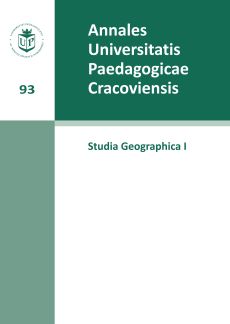Aral Sea – the biggest ecological disaster of the century
Keywords:
relict lake, Amu-Darya delta, Syr-Darya delta, irrigation channels, deserfiticationAbstract
One of the best examples of environmental risk arising as a result of inefficient management of environmental resources is the disappearance of the Aral Sea. Aral Sea extends into the territories of Kazakhstan and Uzbekistan. About 10 thousand years ago, this vast body of water was under the influence of water from melting mountain glaciers, flowing directly into the Aral Basin. However, the climate change which started about 3500 years ago contributed to the drying process of the tank. This process became stronger in character at the beginning of the 1960s, when due to the planned economy of the USSR, it was decided to develop large-scale cultivation of cotton in areas too dry to be suitable for such crops. Therefore, the water from the rivers Syr-Darya and Amu-Darya, flowing into the Aral Sea, was directed to irrigation, without worrying about the ecological balance. Consequently, this led to irreversible environmental changes. The Aral Sea Area decreased by 40% and its volume decreased by two-thirds. Water level dropped about 13 feet and is still falling. Historically, the reservoir was fed by more than 60 km3 of water per year; currently it is only about 5 km3. There were years when the lake received virtually no water as a result of these processes. In 1988 a division of the lake into two parts was carried out: the Big Aral Sea in the south and the Small Aral Sea in the north. The salinity of water remaining in the basin has increased roughly three fold ,which has disastrous consequences for the world’s flora and fauna. The Aral Sea region’s economy disappeared completely, e.g. the fisheries and associated processing industries, a sin water with such high salt content no organisms are able to survive. As the lake shrank and large parts of it are now dry, when strong winds blow across the land, they carry huge amounts of tiny particles of salt remaining after the water has evaporated. It has been calculated that in the year after such a dust storm around 75 million tonnes of sand mixed with salt was spread. The toxic dust destroys settlings, fields, and plants, and it is difficult to find a way to counteract this process.
References
Trieszczikow A.F., 1991,Istorija ozior SSSR, [w:] Wielka encyklopedia PWN, t. 2, Warszawa 2001, s. 220.
www.mapypomocnik.pl
www.wordpress.com
www.kartografia.pl
www.geozeta.pl
www.newsweek.pl
www.wiadomosci.pl
www.mipe.oswiata.org.pl
www.travelmaniacy.pl
Downloads
Published
Issue
Section
License
The submission of a paper to be published is synonymous with an agreement to transfer the copyright free of charge from the author to the publisher. The author also agrees to permit the publisher to publish the paper in printed form, open access online form, digital library form and other digital platforms with which the publisher has or will have a publishing agreement. Furthermore, the author agrees to not limit the number of copies that may be printed or issued by the publisher. In the case of co-authored papers, it is assumed that the corresponding author is authorized to represent the remaining co-authors in this respect. Authors are requested to sign a copyright declaration.

